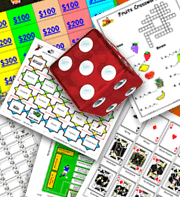 Practice - just writing - is the best way to improve your writing. Letter, journal and online writing are all more comfortable ways to practice writing than formal essays. Get used to expressing yourself writing in English. Then worry about essays.
Review this and write us a letter. We promise to answer (unless it's spam..)
Practice - just writing - is the best way to improve your writing. Letter, journal and online writing are all more comfortable ways to practice writing than formal essays. Get used to expressing yourself writing in English. Then worry about essays.
Review this and write us a letter. We promise to answer (unless it's spam..)
What is a
LETTER?
Letter - a written message addressed to a person or organization, company or an institution. It could be a formal letter or a informal or friendly letter.
What are the Basic Parts of a Letter?
1. Date
The date line is used to indicate the date the letter was written. However, if your letter is completed over a number of days, use the date it was finished in the date line. Write out the month, day and year two inches from the top of the page.
2. Salutation
Also called the Greeting. Use the same name as the inside address, including the personal title. If you know the person and typically address them by their first name, it is acceptable to use only the first name in the salutation (for example: Dear Lucy:). In all other cases, however, use the personal title and full name followed by a colon. Leave one line blank after the salutation.
If you don't know a reader's gender, use a nonsexist salutation, such as "To Whom it May Concern." It is also acceptable to use the full name in a salutation if you cannot determine gender. For example, you might write Dear Chris Harmon: if you were unsure of Chris's gender.
3. Body
The body is written as text. A business letter is never hand written. Depending on the letter style you choose, paragraphs may be indented. Regardless of format, skip a line between paragraphs.
4. Conclusion
The conlclusion summarizes the body of the letter. Most formal letters have a conclusion, while some informal letter usually doesn't have a conclusion.
5. Closing
The closing begins at the same horizontal point as your date and one line after the last body paragraph. Capitalize the first word only (for example: Thank you) and leave four lines between the closing and the sender's name for a signature. If a colon follows the salutation, a comma should follow the closing; otherwise, there is no punctuation after the closing.
Other commonly used closing:
Sincerely, Sincerely Yours, Yours Truly, Respectfully Yours, and others
6. Signature
Type or print your name. The handwritten signature goes above this line and below the close. The signature line and the handwritten signature are indented to the same column as the close. The signature should be written in blue or black ink. If the letter is quite informal, you may omit the signature line as long as you sign the letter.
Basic Parts of a Letter - Level B - Teacher Aisa













